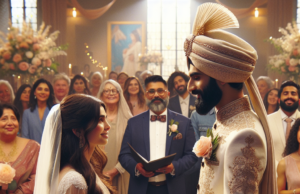
Introduction
Marriage is a significant societal institution and a core foundation of our civilization. It is a solemn vow between two individuals to be committed to each other for life. Nonetheless, not every couple can afford to perform a ceremony or get married officially, but their love and commitment are genuine. Common law marriage is an arrangement where two individuals are considered legally married without any formal documentation. This article seeks to discuss the concept of common law marriage in Indiana, including the requirements, benefits, and its status under the Indiana law.
What is Common Law Marriage?
Before delving into the specifics, it is essential to understand what common law marriage means. Common Law marriage refers to a marriage that happens without any legal or religious ceremony. It happens when two individuals share life as a married couple and hold themselves out to the general public and family as married without the formalities. In other words, common law marriage usually occurs when two individuals live together in a domestic relationship, generally referred to as cohabitation, for a specific period, often regarded as “holding out” as married.
The crucial aspect of common law marriage is the intention to be perceived as a married couple. This intention is discernible from various factual patterns, such as filing taxes together, using the same last name, introducing themselves to third parties as spouses, and signing joint contracts. Unlike a traditional marriage, there’s no formal paperwork to complete.
Common Law Marriage in Indiana
In Indiana, common law marriage is a legal institution that can result from cohabitation between two individuals who present themselves as husband and wife. According to the Indiana statute, I.C. 31-11-8-5, a common law marriage is recognized under certain conditions. However, the statute neither formally provisions nor recognizes common law marriage in Indiana. In other words, a statutory common law marriage does not exist; however, Indiana law does recognize common law marriage to a limited extent.
Requirements for Common Law Marriage in Indiana
Indiana recognizes common law marriage under certain guidelines. Indiana law specifies that there must be an agreement between the two parties to assume a matrimonial relationship, a public declaration of their marriage, and cohabitation for a sufficient period to be recognized as husband and wife. The period of cohabitation does not have a specific timeline. Nonetheless, Indiana courts have stipulated that a duration of three years is enough time for a couple to be recognized as being in a common law marriage.
To qualify as a common law spouse in Indiana, two individuals must comply with the following requirements:
1. Mutual Agreement – The first requirement for common-law marriage is mutual consent or mutual agreement. It means that both parties must agree to enter into a marital relationship.
2. Cohabitation – Cohabitation is essential in common-law marriages. The couple must reside together as spouses and maintain a household.
3. Public Declaration – The third requirement is publicly recognizing that they are married. It may include presenting themselves to others as being in a marital relationship. This recognition can be both verbal and none-verbal.
4. Intent – They must have the intention to be recognized as being spouses or intending to enter into a marriage-like a relationship.
Benefits of Common Law Marriage
Common-law marriage provides several benefits and obligations. Some of these benefits are:
• Property Rights – The parties in a common-law marriage acquire property rights in the property obtained during marriage, just like in a formal marriage.
• Inheritance – A common law spouse can inherit the personal and real property of their deceased spouse if the deceased spouse left no will.
• Tax Benefits – Common-law spouses can file a joint tax return and enjoy tax benefits that married couples enjoy.
• Insurance – Common law spouses can access healthcare insurance programs like life, health, and dental insurances, and can be beneficiaries in their spouse’s insurance.
Status of Common Law Marriage in Indiana
Common law marriages in Indiana may not be recognized as a statutory law, but the state does recognize them to a limited extent. Indiana law acknowledges common-law marriages that meet the above requirements and considers them legally binding. The state’s recognition is critical since it provides spousal rights and benefits to those in cohabitation. Like traditional marriages, common law marriages can only be terminated through legal divorce proceedings.
Conclusion
In conclusion, common law marriage is a marriage that occurs after a couple actively lives together and portrays an image of being married. Despite its lack of provision in the Indiana statute, the state acknowledges common law marriages that meet specific guidelines. These guidelines include mutual agreement, cohabitation, public declaration of marriage, and intent to be recognized as married. The absence of formal paperwork does not prevent a common-law marriage from granting the parties several benefits, such as property rights, inheritance, tax benefits, and insurance coverage. Therefore, despite its difficulties to prove, common-law marriage remains a critical legal institution in Indiana.
Common-law marriage Indiana describes the arrangement in common law where two people that live together enjoy the status and benefits of marriage without having the marriage ceremony.
Common-law marriage in Indiana was available until the mid-20th century until they were struck from state law.
These days, one cannot get a common law marriage in IN. the only common law marriage in IN that still exist will be from the few states that have limited common law marriage laws or Common law marriage Indiana that existed prior to the ban.
Two people cohabitating in Indiana, cannot have a common-law marriage in IN and must apply for a marriage license and have a marriage ceremony, according to the rules of the state.
When was the ban on Common law marriage in Indiana put in place?
Indiana law on common marriage was banned in 1958. The ban is not absolute, as couples married with a common-law marriage in IN prior to that will remain married by the same provisions.
What is per lex loci celebrations?
The principle of per lex loci celebrations (by the law of the place of celebration) allows common-law marriages from out of state to be recognized as common law marriage in Indiana.
By this principle, if the marriage is legal in the jurisdiction it came from, then this will be recognized as a common-law marriage in IN, though state residents cannot get such a marriage.
Note that this does not include same-sex marriage, as same-sex marriage is expressly forbidden by state law and will not even count as common law marriage in Indiana with per lex loci celebrations.
What is grandfathering?
Grandfathering refers to common law marriage IN that is entered before 1958. All other marriages after that have to be solemnized by the appropriate authority. No common-law marriage IN can be solemnized.



















